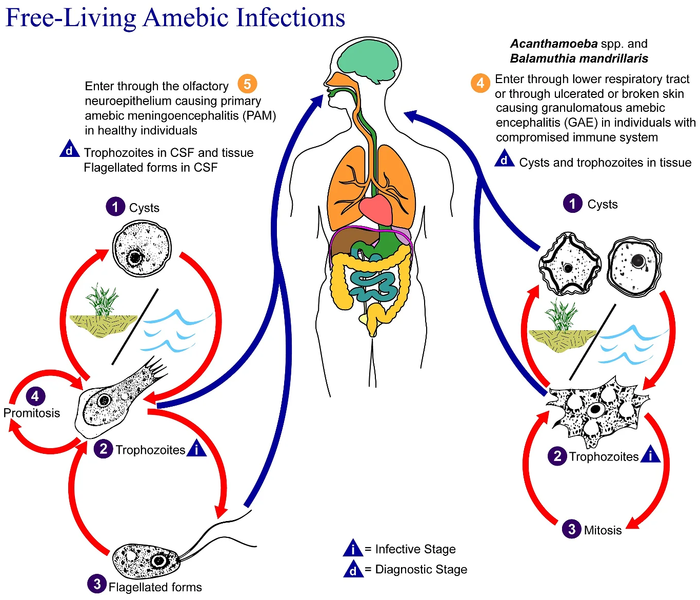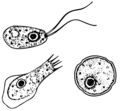Fil:Free-living amebic infections.png

Storlek på förhandsvisningen: 700 × 600 pixlar. Andra upplösningar: 280 × 240 pixlar | 560 × 480 pixlar | 896 × 768 pixlar | 1 195 × 1 024 pixlar | 1 365 × 1 170 pixlar.
Originalfil (1 365 × 1 170 pixlar, filstorlek: 715 kbyte, MIME-typ: image/png)
Filhistorik
Klicka på ett datum/klockslag för att se filen som den såg ut då.
| Datum/Tid | Miniatyrbild | Dimensioner | Användare | Kommentar | |
|---|---|---|---|---|---|
| nuvarande | 2 februari 2023 kl. 11.24 |  | 1 365 × 1 170 (715 kbyte) | Materialscientist | https://answersingenesis.org/biology/microbiology/the-genesis-of-brain-eating-amoeba/ |
| 20 juli 2008 kl. 08.30 |  | 518 × 435 (31 kbyte) | Optigan13 | {{Information |Description={{en|This is an illustration of the life cycle of the parasitic agents responsible for causing “free-living” amebic infections. For a complete description of the life cycle of these parasites, select the link below the image |
Filanvändning
Inga sidor använder den här filen.
Global filanvändning
Följande andra wikier använder denna fil:
- Användande på de.wikibooks.org
- Användande på en.wiktionary.org
- Användande på fi.wikipedia.org
- Användande på fr.wikipedia.org
- Användande på gl.wikipedia.org
- Användande på hr.wikipedia.org
- Användande på is.wikipedia.org
- Användande på it.wikipedia.org
- Användande på pl.wikipedia.org
- Användande på te.wikipedia.org
- Användande på vi.wikipedia.org
- Användande på www.wikidata.org
- Användande på zh.wikipedia.org



